
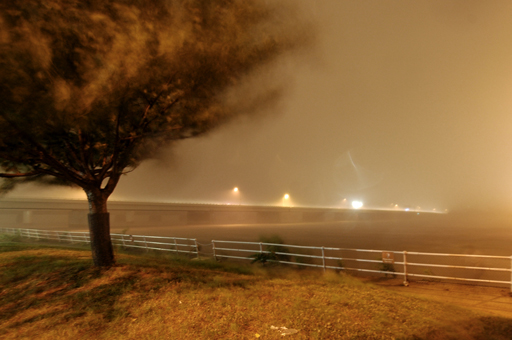
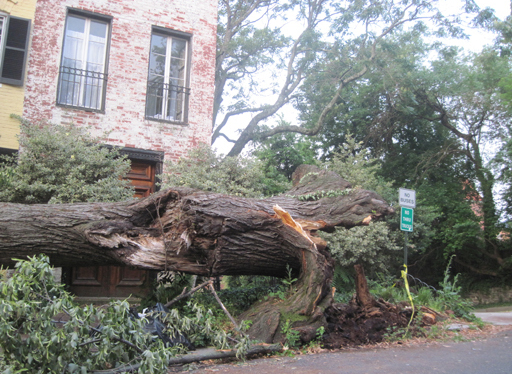
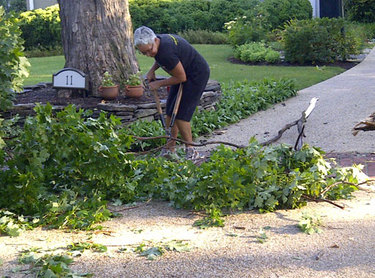
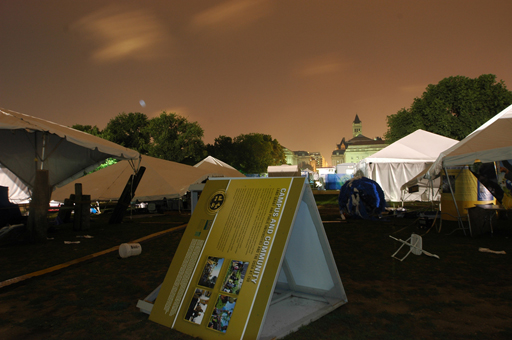

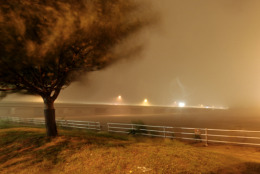
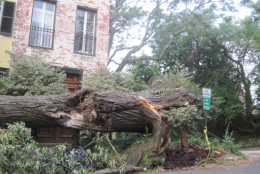
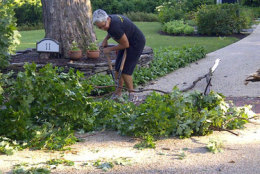
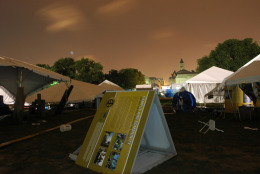
WASHINGTON — Five years ago Thursday, much of the D.C. region learned a new word, and it didn’t like it one bit.
A rare but powerful storm called a derecho left our area reeling for days with downed trees and widespread power outages.
The storm caused over $1 billion in damage, from Chicago to D.C. It killed 13 and left more than 4 million without power.
In the D.C. area, hundreds of thousands were left without electricity.
Ahead of the anniversary, WTOP spoke with representatives from several area power companies about their response to the June 29, 2012, storm, and the changes that have been made in its wake.
“With the derecho, nobody had any warning. It defied all weather models, and no utility was prepared for it,” said Jerry Pasternak, vice president of government affairs with Pepco.
“No one ever heard of the term ‘derecho’ before it came through five years ago,” said Chuck Penn with Dominion Virginia Power.
“It was a seven-day restoration period. We had mutual aid help from 18 states and as far away as Canada,” he added. “We had 6,000 field workers working this storm, and … 55 Dominion retirees felt so bad for us that they came out of their retirement to help us with the restoration.”
“It took very little time for that very fast-moving storm to do significant damage to our infrastructure,” said Linda Foy with BGE.
“It was a huge storm, a huge undertaking for us, and as you recall, there was also a heat wave that came right after the storm,” Foy added.
For Pepco, Pasternak said the derecho highlighted two big things.
“One was the need to improve our outreach and communications, and the second was the need to invest in our system to make it more resilient. And I think we’ve done both.”
Pepco has developed a new app where customers can report an outage, check its status and look at an outage map.
Also, Pasternak said, the utility is doing more on social media and has improved its outreach to elected leaders and others during outages.
Penn said Dominion has also made upgrades.
“I think as a result of derecho, and each and every time we have a multiday event, we’re getting better at providing restoration times to our customers — restoration times with a high degree of confidence that it’s accurate,” he said.
According to Penn, Dominion is also being more proactive with customers on social media, and has refined its restoration methods to ensure critical infrastructure such as hospitals and 911 centers get top priority.
BGE always does a “lessons learned” evaluation after major events, Foy said, and after the derecho, it held a series of community meetings.
“We improved our tree-trimming practices, [and] we also installed upgraded wiring,” she said. “There was some wiring that we were using in certain areas that was not as durable as the wiring that is currently on the market, so we upgraded the wiring.”
Numerous other improvements have been made systemwide, said Foy, and customers are seeing the benefits.
“We have seen the duration of outages and the number of outages in our service area go down significantly since the derecho,” she said.







